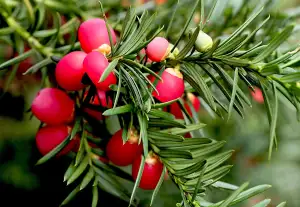Hydrangea Care 101: Expert Tips for Cultivating Gorgeous Blooms at Home

- Choosing the Right Location for Hydrangeas
- Planting Hydrangeas in the Garden
- Watering and Hydrating Hydrangeas
- Fertilizing Hydrangeas for Optimal Growth
- Pruning Hydrangeas to Promote Health and Blooming
- Protecting Hydrangeas from Pests and Diseases
- Overwintering Hydrangeas for Cold Climates
- Troubleshooting Common Hydrangea Care Issues
Hydrangeas are beloved for their stunning, showy blooms that come in a variety of colors. Whether you're a seasoned gardener or just starting out, understanding the basics of hydrangea care is essential to cultivating gorgeous blooms at home. In this article, we will guide you through the key steps to successfully care for your hydrangeas, from choosing the right location to overwintering them in colder climates. With these expert tips, you'll be able to enjoy the beauty of hydrangeas and find joy in every step of their care.
Choosing the Right Location for Hydrangeas
Choosing the right location for hydrangeas is crucial for their growth and blooming. Hydrangeas thrive in partial shade, with morning sun and afternoon shade being ideal. Avoid planting them in full sun as it can cause leaf burn and wilted blooms. Ensure the soil is well-draining and rich in organic matter. Additionally, consider the size of the mature plant when choosing a location to allow enough space for proper growth and airflow. By selecting the right spot, you'll set your hydrangeas up for success and ensure they flourish beautifully in your garden.
Planting Hydrangeas in the Garden
When it comes to planting hydrangeas in your garden, there are a few key factors to consider. First, choose a location that receives partial shade or filtered sunlight. Hydrangeas thrive in these conditions and can suffer if exposed to too much direct sunlight.
Next, prepare the soil by adding organic matter such as compost or well-rotted manure. This will improve drainage and provide essential nutrients for healthy growth. Dig a hole that is twice as wide and just as deep as the root ball of your hydrangea plant.
Carefully remove the plant from its container and gently loosen the roots before placing it in the hole. Position the plant so that the top of the root ball is level with or slightly above the surrounding soil.
Backfill the hole with soil, firming it gently around the roots to eliminate any air pockets. Water thoroughly after planting to settle the soil and ensure good root-to-soil contact.
Finally, mulch around the base of your hydrangea with a layer of organic mulch, such as wood chips or bark. This will help conserve moisture, suppress weeds, and regulate soil temperature.
Remember to space your hydrangeas properly according to their specific variety, as overcrowding can lead to poor air circulation and increased susceptibility to disease. With proper planting techniques, you'll be on your way to cultivating beautiful hydrangea blooms in your garden!
Watering and Hydrating Hydrangeas
Proper watering is essential for the health and vitality of hydrangeas. These plants require consistent moisture, but overwatering can lead to root rot. To ensure optimal hydration, water deeply once a week, allowing the soil to dry slightly between waterings. Avoid wetting the foliage as this can promote disease. Mulching around the base of the plant helps retain moisture and regulate soil temperature. Remember, a well-hydrated hydrangea will reward you with stunning blooms all season long.
Fertilizing Hydrangeas for Optimal Growth
To ensure your hydrangeas thrive and produce gorgeous blooms, proper fertilization is essential. Start by choosing a balanced, slow-release fertilizer specifically formulated for flowering plants. Apply the fertilizer in early spring, just as new growth begins.
Avoid over-fertilizing, as this can lead to excessive foliage growth at the expense of flower production. Follow the instructions on the fertilizer package carefully to determine the appropriate amount to use.
For blue hydrangeas, which prefer acidic soil, you can add aluminum sulfate or garden sulfur to lower the pH level and intensify their color. For pink or red varieties that thrive in alkaline soil, you can apply lime to increase the pH level.
Remember to water your hydrangeas thoroughly after fertilizing to help distribute nutrients evenly throughout the root system. Regular fertilization will promote healthy growth and vibrant blooms, allowing you to enjoy the full beauty of your hydrangeas.
Pruning Hydrangeas to Promote Health and Blooming
Pruning hydrangeas is essential for promoting their health and encouraging blooming. The best time to prune depends on the type of hydrangea you have. For mophead and lacecap hydrangeas, it's best to prune them right after they finish flowering in the summer. Remove any dead or damaged wood, as well as any weak or crossing branches. This will help improve air circulation and sunlight penetration, leading to healthier growth and more abundant blooms. Avoid pruning too late in the season, as this can remove next year's flower buds. With proper pruning, your hydrangeas will thrive and reward you with beautiful blooms all season long.
Protecting Hydrangeas from Pests and Diseases
To keep your hydrangeas healthy and vibrant, it's important to protect them from pests and diseases. One common pest that can wreak havoc on hydrangeas is the aphid. These tiny insects feed on the plant sap, causing leaves to curl and flowers to become distorted. To combat aphids, you can use insecticidal soap or a homemade solution of water and dish soap.
Another common problem for hydrangeas is powdery mildew, a fungal disease that appears as a white powdery coating on the leaves. To prevent powdery mildew, make sure your hydrangeas have good air circulation by spacing them properly and avoiding overhead watering. If you notice signs of powdery mildew, treat it with a fungicide specifically designed for this disease.
Other pests to watch out for include spider mites, slugs, and snails. Spider mites are tiny pests that suck the sap from leaves, causing them to turn yellow or brown. You can control spider mites by regularly spraying your plants with water or using an insecticidal soap.
Slugs and snails are nocturnal creatures that feed on the leaves and flowers of hydrangeas. To deter these pests, create barriers around your plants using copper tape or diatomaceous earth. You can also handpick slugs and snails off your plants in the evening when they are most active.
By taking proactive measures to protect your hydrangeas from pests and diseases, you can ensure they thrive and continue to bring beauty to your garden. Regularly inspecting your plants for signs of trouble and addressing any issues promptly will help keep your hydrangeas healthy and flourishing for years to come.
Overwintering Hydrangeas for Cold Climates
In colder regions, it is crucial to properly protect your hydrangeas during the winter months. Start by mulching around the base of the plant with a thick layer of organic material, such as straw or wood chips. This will insulate the roots and help retain moisture.
Next, consider wrapping your hydrangeas in burlap or frost cloth to shield them from harsh winds and freezing temperatures. Be sure to secure the covering tightly around the plant without causing damage.
If you have potted hydrangeas, bring them indoors before the first frost hits. Place them in a cool, dark area where the temperature stays above freezing but doesn't exceed 45°F (7°C). Water sparingly during this dormant period.
Remember to remove any dead or diseased branches before winter sets in. This will prevent potential issues and promote healthy growth come springtime.
By following these steps, you can ensure that your hydrangeas survive even the harshest winter conditions and continue to delight you with their beautiful blooms year after year.
Troubleshooting Common Hydrangea Care Issues
Despite your best efforts, you may encounter some common issues when caring for hydrangeas. One problem is the lack of blooms. This could be due to pruning at the wrong time or improper fertilization. Ensure you are following the correct pruning techniques and using a balanced fertilizer.
Another issue is wilting leaves, which can be caused by overwatering or underwatering. Check the soil moisture regularly and adjust your watering accordingly. Additionally, yellowing leaves may indicate nutrient deficiencies, so consider using a specific hydrangea fertilizer.
If you notice brown spots on the leaves, it could be a sign of fungal diseases such as powdery mildew or leaf spot. Apply fungicides as directed to prevent further spread. Lastly, if your hydrangeas are not growing well or appear weak, it might be due to poor soil quality or inadequate sunlight. Test the soil and make necessary amendments, and ensure they receive enough sunlight each day.
By troubleshooting these common issues promptly, you can ensure that your hydrangeas thrive and continue to bring beauty to your home garden.
In conclusion, cultivating hydrangeas can bring immense beauty and joy to your home. By following the expert tips outlined in this article, you can ensure that your hydrangeas thrive and produce gorgeous blooms year after year. Remember to choose the right location, provide adequate watering and hydration, fertilize appropriately, prune for health and blooming, protect from pests and diseases, overwinter in cold climates, and troubleshoot any issues that may arise. With proper care, you can enjoy the stunning beauty of hydrangeas in your garden or as cut flowers in your home. So go ahead, start your hydrangea journey and find happiness in every bloom!
Published: 21. 12. 2023
Category: Home



